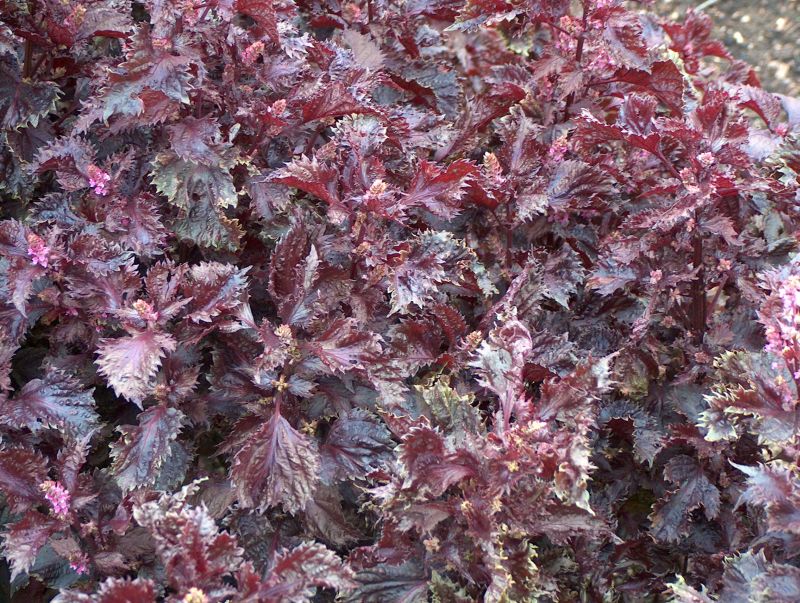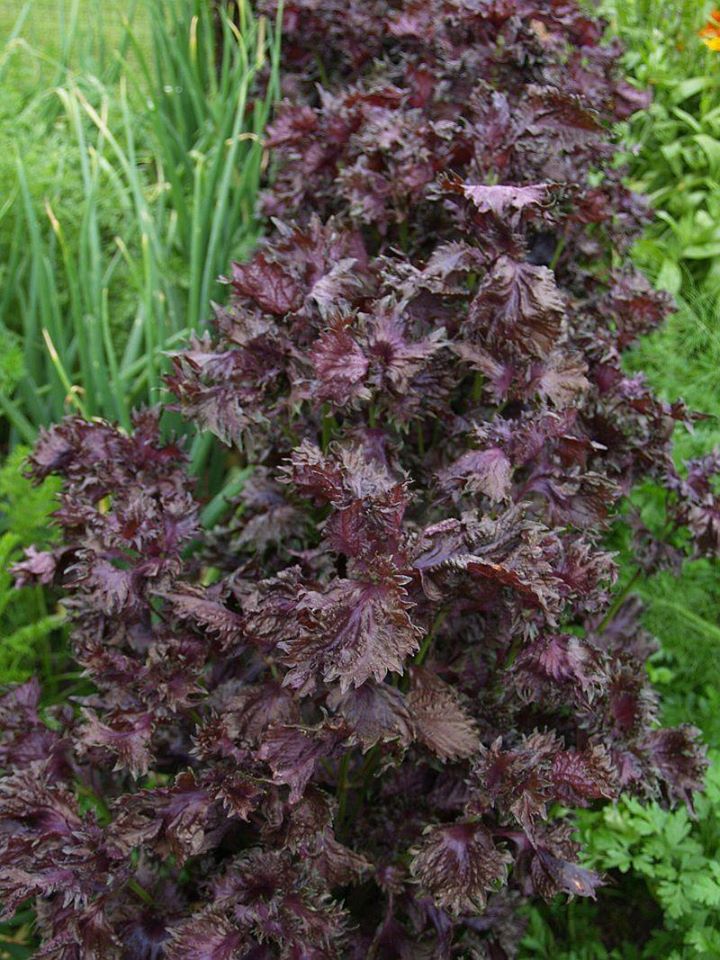Perilla frutescens var crispa f. purpurascens (red or purple shiso) is looking good on the window sill in front of my desk! This is an important crop in the Far East both used as a flavouring, a dye plant, as wraps (the seeds, seed oil and seed sprouts are also used). I’d love to use the leaves to colour pickled chinese artichokes (chorogi), as shown on the Backyard Larder blog (see https://backyardlarder.co.uk/plants/chinese-artichoke), but the chorogi aren’t ready until November. Maybe I’ll try drying some leaves!
I grow this annual indoors as it’s generally too cold outside here in summer. It’s also difficult to save seeds as it doesn’t start flowering until late autumn and usually dies rather than producing seeds, a dead end for me, but now and again someone offers me seed for trading as in this case!
Perilla is also of course commonly used as an ornamental in warmer areas like Southern England, but I’ve also seen it outside in Gothenburg in Southern Sweden.
Perilla is in the mint family and it’s also easy to make more plants by taking cuttings (like basil).
I most often use shiso in my mixed salads.
Tag Archives: chorogi
Jack-go-to-bed-by-noon/Chorogi/Madeira vine tuber harvest
All are now stored in the cellar.
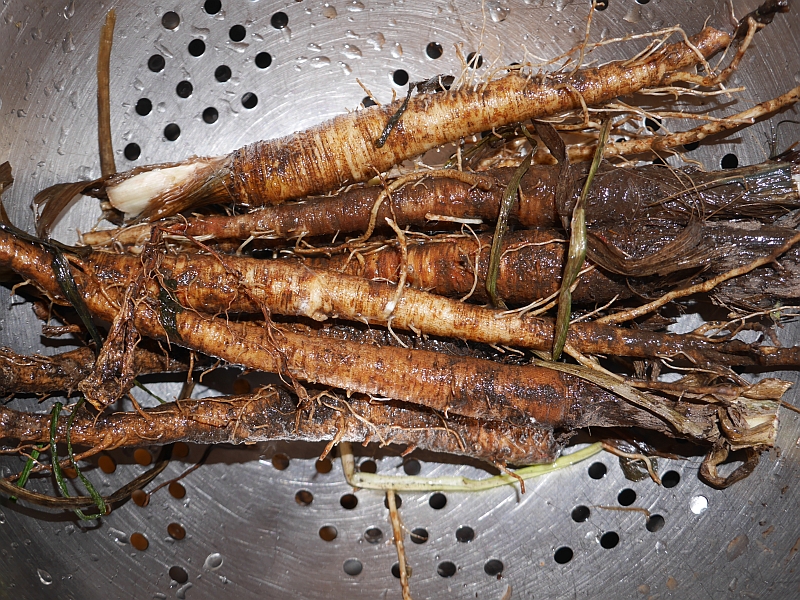
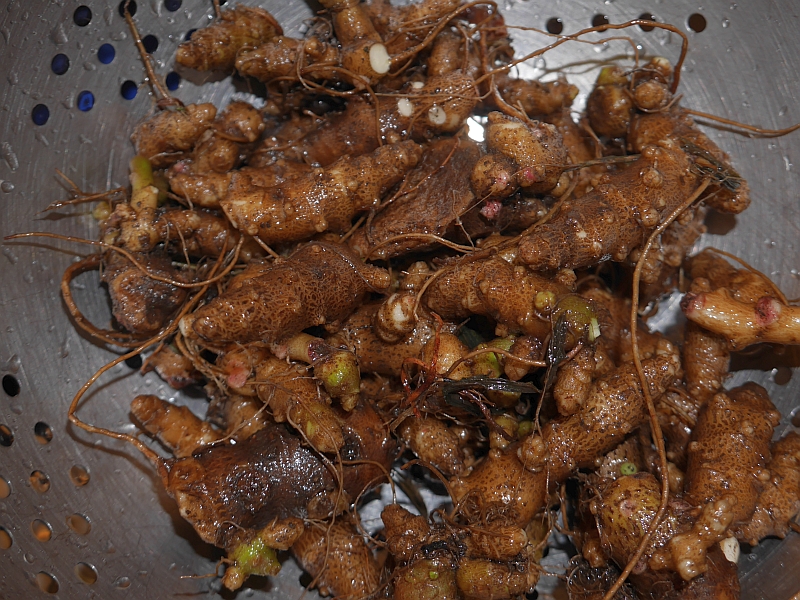
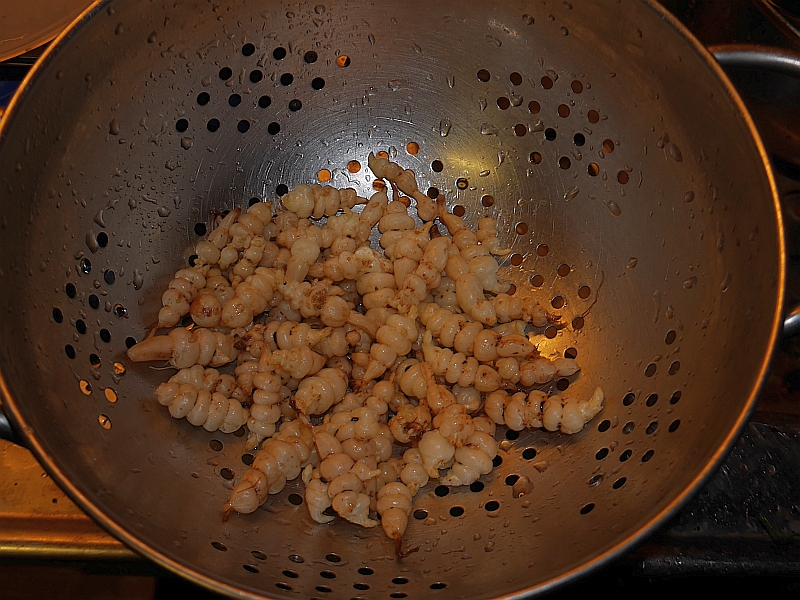
Joke plants
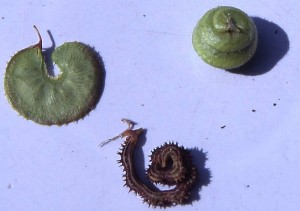
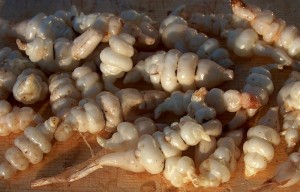
I read some 15 years ago (but would love a proper reference*) that the Victorians (and some more recent jokers too) were fond of practical jokes and would add various plant parts that resembled caterpillars, snails, worms etc to their salads. I call them collectively joke plants. I should grow them again…I love humour in the garden :)
Scorpiurus muricatus and S. vermiculatus (Prickly caterpillars, prickly scorpionstail / skorpionurt), Medicago scutellata “Sava” (snail medick), Medicago radiata (ray-podded medick) and chorogi or chinese artichoke (Stachys affinis) are examples. Pictures below (yes, I’ve grown them and smuggled them into my salads for the entertainment of unsuspecting visitors!)
*I find the following reference in Google Books: A Joy of Gardening by Victoria Sackville-West (Harper, 1958). On pages 184-186, there’s a section called “Joke plants” which I’d love to get hold of! Anyone have this book?
Add 050916: Thanks to Alison Tindale who mentioned joke plants in her great blog The Backyard Larder having seen a reference in the classic book by Fearing Burr “The Field and Garden Vegetables of America Containing Full Descriptions of Nearly Eleven Hundred Species and Varietes; With Directions for Propagation,Culture and Use” (1863). See
http://backyardlarder.blogspot.hu/2013/06/rhubarb-vegetable.html (at the bottom)



